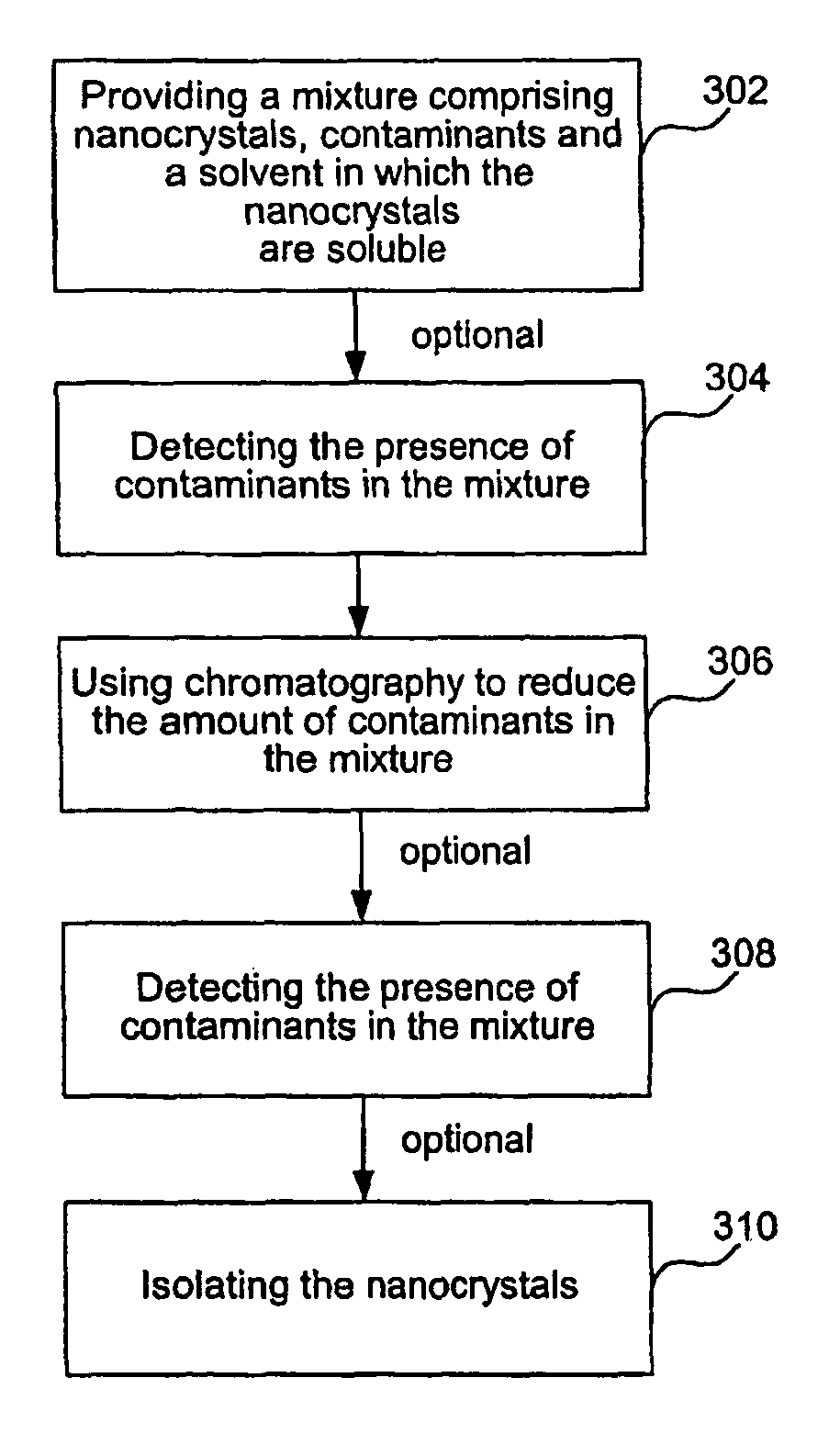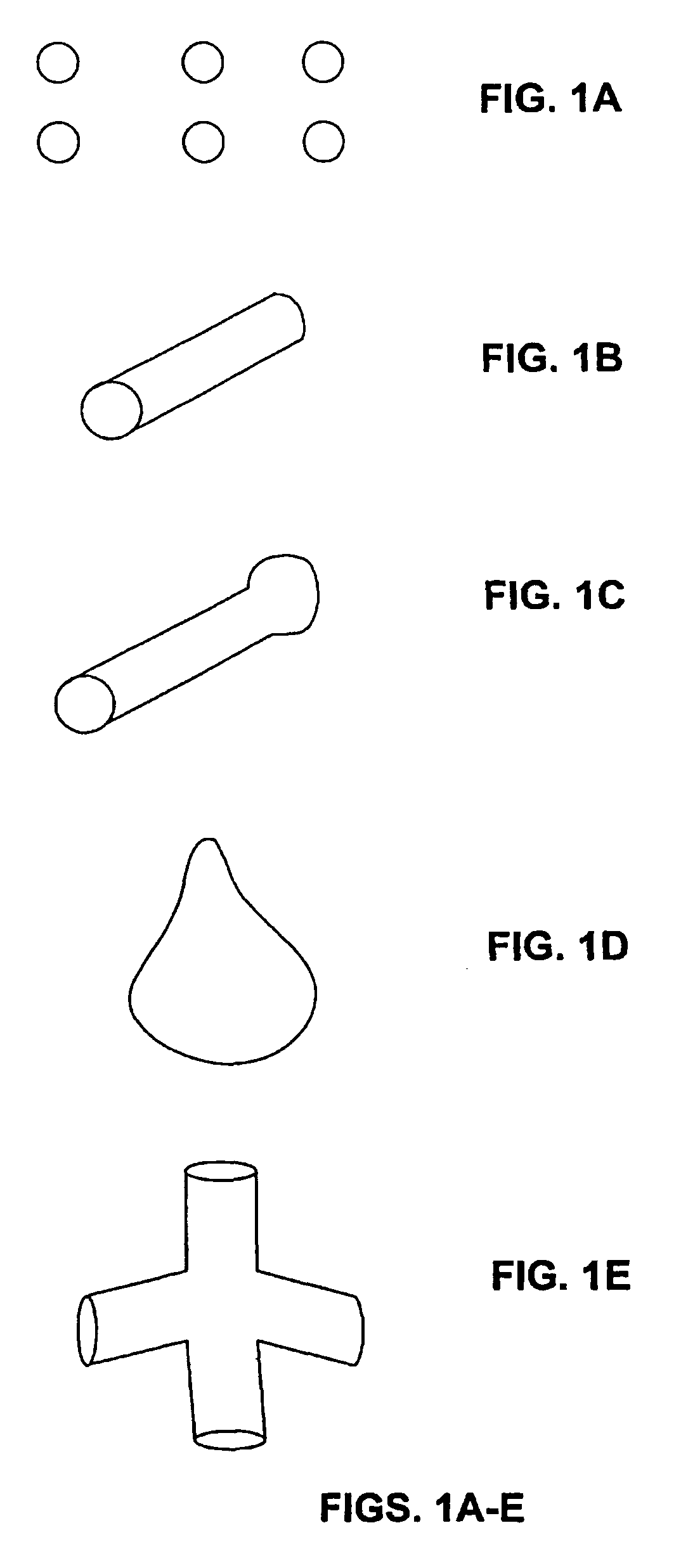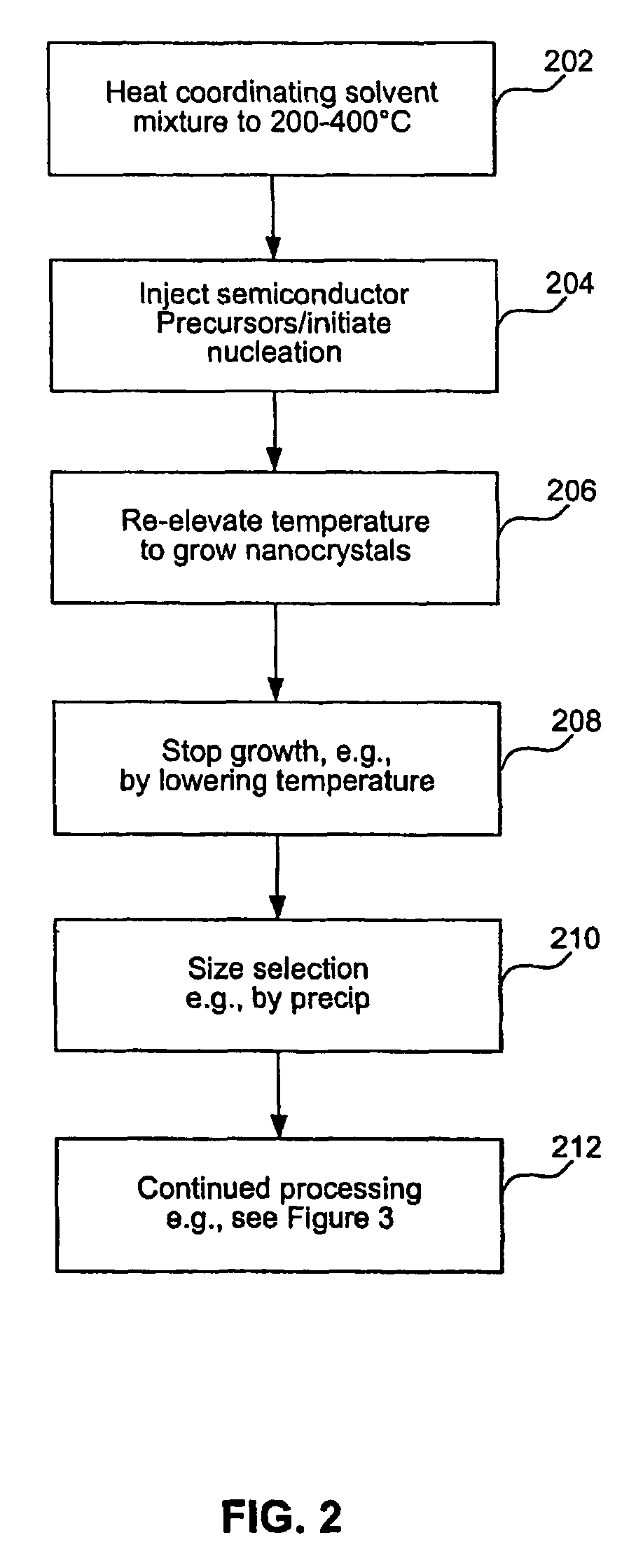Purification of nanocrystal solutions by chromatography
a technology of chromatography and nanocrystals, applied in the field of nanocrystals, can solve the problems of increasing the cost and difficulty of processing nanocrystals, presenting a substantial hurdle to realizing the full benefits of these materials, and reducing so as to reduce the amount of excess bound surfactant
- Summary
- Abstract
- Description
- Claims
- Application Information
AI Technical Summary
Benefits of technology
Problems solved by technology
Method used
Image
Examples
examples
[0106]Indium phosphide nanocrystals were synthesized and the product was washed by four successive precipitations with ethanol and methanol. The washed nanocrystals were dissolved in about 2.0 mL of chloroform. An HPLC setup, similar to that shown in FIG. 7, was used for the purification. The mobile phase was about 10% dry, degassed methanol in dry, degassed chloroform. The stationary phase was a reversed-phase C18-silica stationary phase. The flow rate was set to about 2 mL / min. The system pressure was about 220 p.s.i. The column height was about 24 mm, and the column width was about 10 mm. A photodiode array was used as the detector. The samples were readily separated into fractions containing almost entirely dissolved nanocrystals and excess solvent and / or surfactant. FIGS. 17A-C show the resulting chromatograms. FIG. 17A shows a 3-D chromatogram and FIGS. 17B-C show the corresponding 2-D chromatograms. Fractions containing the dissolved nanocrystals elute between three and four ...
PUM
| Property | Measurement | Unit |
|---|---|---|
| diameter | aaaaa | aaaaa |
| temperature | aaaaa | aaaaa |
| temperature | aaaaa | aaaaa |
Abstract
Description
Claims
Application Information
 Login to View More
Login to View More - R&D
- Intellectual Property
- Life Sciences
- Materials
- Tech Scout
- Unparalleled Data Quality
- Higher Quality Content
- 60% Fewer Hallucinations
Browse by: Latest US Patents, China's latest patents, Technical Efficacy Thesaurus, Application Domain, Technology Topic, Popular Technical Reports.
© 2025 PatSnap. All rights reserved.Legal|Privacy policy|Modern Slavery Act Transparency Statement|Sitemap|About US| Contact US: help@patsnap.com



